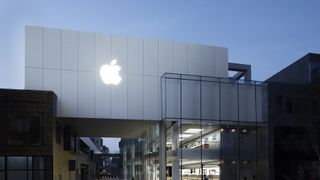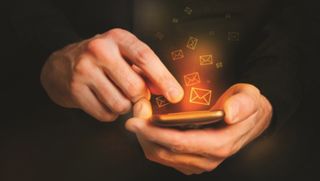Deployment strategies for the iPhone 6 in the enterprise
Be ready with policies, device management and training

The iPhone 6 is set to arrive next week, with a bigger screen (and a phablet version, by all accounts) and a brand new operating system called iOS 8 that (finally) has better security options and device management tools.
With any new launch, from Apple or any other popular smartphone company, there's an excitement about the event among company employees and a feeling of dread among the IT staff. Which technical problems might occur with enterprise-grade apps? Will end-users experience technical glitches on the Wi-Fi network? Could there be new security challenges with the email encryption? The issues are not just related to employee acceptance but the policies, infrastructure, and device management related to the deployment.
Here are six strategies for success to help specifically with the new iPhone 6 launch to make sure you have the pieces in place for a successful deployment in the enterprise.
1. Prepare your users and staff
Apart from the debate about allowing employees to bring their own device versus providing corporate-approved smartphones, the iPhone 6 will show up in the enterprise, will attach to corporate networks, and will be used for daily productivity in the workplace. The IT industry has learned to deal with the reality of BYOD and found ways to work with that reality.
With the iPhone 6, there's always an initial influx as employees purchase the device almost right away. Preparing departments for the launch, training IT staff on what to do about any potential pitfalls, and evaluating security issues are all important strategies. In some ways, a new smartphone launch presents a good opportunity to re-educate everyone.
2. Focus on security
Lysa Myers, a researcher with security firm ESET, says one of the best approaches to deployment is to prep users about security issues prior to launch, even if all of the details about form and function are not known. (At least IT admins know a lot about iOS 8 features, with the new operating system promising to offer better encryption for apps like the Calendar and Mail client.)
"Employees and IT should update software as promptly as possible, encrypt sensitive data in files sent across the network, backup important files, and enable security features within the operating system (especially related to remote wipe and auto-lock)," she advises. "You may wish to limit apps to an approved list to minimise the possibility of employees installing leaky apps."
Are you a pro? Subscribe to our newsletter
Sign up to the TechRadar Pro newsletter to get all the top news, opinion, features and guidance your business needs to succeed!
3. Create policies before launch
Of course, the time to create use policies is not after the device becomes available online and at the Apple store. Because the iPhone 6 is often seen primarily as a consumer device, one that people purchase on their own and then use at work, it's critical to develop policies now.
"By establishing policies, you can determine what needs to be done and you'll have something to point to when employees have questions," says Myers. "In creating the policy, you want to assess potential risks and address them. And once this is taken care of, you can have a list of tasks ready to go when the new phone is released."
4. Tweak policies after launch
Once IT knows more about the actual device, it's important to tweak policies for the specific features available. Nicholas Lee, the senior director of end user services at Fujitsu America, an information and communications technology company, says the policies should be as specific as possible when it comes to employee usage. There should be information about user responsibility for the device, parameters for mobile carriers, liabilities and limitations imposed for the iPhone 6, a knowledge base, and end-user training available shortly after launch.
Policy and device management should be an ongoing part of your deployment strategy, not just something you do at the launch of the new device. As you learn more about the encryption features, new apps for business, and any hardware features, the launch strategy should be adjusted accordingly. One example of this from the iPhone 5/5s launch; IT had to learn quickly about the new fingerprint reader and its capabilities as an added security benefit.

5. Be ready with Mobile Device Management (MDM)
One critical aspect of deployment for any new smartphone is to use a robust MDM (Mobile Device Management) tool, one that enforces your policies and allows IT to track the devices within the enterprise. "Having a proper MDM solution will ensure you maintain the standard level of security and policy control over the devices," says Lee. "As new features are enabled via the MDM console, you can assess whether they add value or risk to your corporate strategy."
These features typically pertain to the approved business apps on the device, data retention policies, Wi-Fi access from the device when it is not being used on a mobile network, and other data and network issues related to that smartphone model specifically.
6. Look for the gotchas
Lee noted one final thought about Apple iPhone 6 deployment strategies: Be careful about any surprises. For example, when the iPhone 5 launched, many IT admins tasked with developing deployment strategies and policies were surprised to find out about the new Lightning port. This meant the device connected to computers using a non-standard connection. Although the actual impact proved negligible (the device still connects over USB), it wasn't an expected change.
With the iPhone 6, there is still no clear indication about whether it will have brand new software and hardware features never seen before in IT, and that's one of the great challenges when it comes to Apple devices – the company does tend to invent new tech enhancements. Being aware of the potential for innovation is key – and then reacting accordingly with the policies.
Image Credit: Apple
John Brandon has covered gadgets and cars for the past 12 years having published over 12,000 articles and tested nearly 8,000 products. He's nothing if not prolific. Before starting his writing career, he led an Information Design practice at a large consumer electronics retailer in the US. His hobbies include deep sea exploration, complaining about the weather, and engineering a vast multiverse conspiracy.
Most Popular



